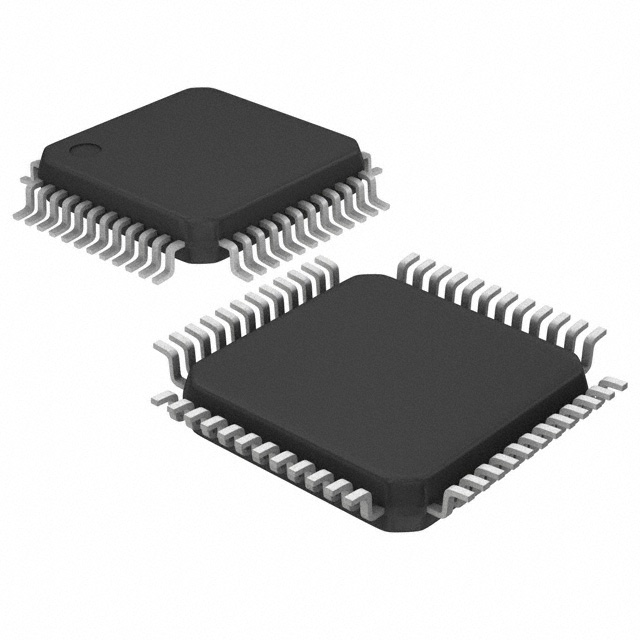Mastering STM32F103C8T6 Programming with Arduino IDE

The STM32F103C8T6 Microcontroller, belonging to the ARM Cortex-M3 MCU family, is integral to the realm of 32-bit Embedded Systems. Its adaptability and cost-effectiveness make it a perfect fit for a wide range of applications, from quick prototyping to intricate embedded projects. Programming this microcontroller is straightforward with the Arduino IDE, which greatly simplifies the development process. Utilizing the Arduino IDE provides a user-friendly environment that eases coding and debugging, making it accessible even to novices. For more detailed specifications, visit this datasheet.
Exploring the STM32F103C8T6 Microcontroller
Key Features of the ARM Cortex-M3 MCU
The STM32F103C8T6 Microcontroller stands out in the world of 32-bit Embedded Systems. It features an ARM Cortex-M3 core, which operates at a clock speed of 72 MHz. This speed ensures efficient processing for various applications. You will find 64KB of flash memory and 20KB of RAM, providing ample space for your programs and data.
Microcontroller Specifications
Processor: ARM Cortex-M3
Clock Speed: 72 MHz
Memory: 64KB Flash, 20KB RAM
GPIO Pins: 37
Connectivity: USB, I2C, SPI, UART
These specifications make the STM32F103C8T6 Microcontroller versatile and powerful. Its GPIO pins allow easy interfacing with other hardware components, enhancing its adaptability.
Applications and Use Cases
The STM32F103C8T6 Microcontroller excels in various applications. You can use it for home automation, sensor integration, and more. Its power efficiency and connectivity options make it ideal for both hobbyists and professionals. Whether you're prototyping or developing complex systems, this microcontroller offers the flexibility you need.
Comparison with Other 32-bit Embedded Systems
When comparing the STM32F103C8T6 Microcontroller to other 32-bit Embedded Systems, several advantages and limitations emerge.
Advantages
Cost-Effectiveness: Offers a budget-friendly option without compromising on performance.
Versatility: Suitable for a wide range of applications, from simple to complex.
User-Friendly: Compatible with the Arduino IDE, simplifying programming and debugging.
Limitations
Memory Constraints: Limited RAM may restrict very large applications.
Complexity: Advanced features might require a learning curve for beginners.
Setting Up the Arduino IDE for STM32
To program the STM32F103C8T6 microcontroller using the Arduino IDE, you need to follow a few essential steps. This setup will enable you to write and upload code efficiently.
Installation Process
Downloading the IDE
First, download the Arduino IDE from the official Arduino website. Choose the version compatible with your operating system. Once downloaded, install it by following the on-screen instructions. This software provides a user-friendly interface for coding and debugging.
Installing Necessary Libraries
After installing the IDE, you must add specific libraries for STM32 support. Open the Arduino IDE, navigate to the "Library Manager," and search for STM32-related libraries. Install these libraries to ensure smooth communication between the IDE and your microcontroller.
Configuring for STM32F103C8T6
Board Manager Setup
Next, configure the board settings. Go to the "Board Manager" within the Arduino IDE. Search for "STM32F1" and install the package. This step is crucial for recognizing the STM32F103C8T6 board.
Selecting the Correct Board
Finally, select the correct board from the "Tools" menu. Choose "Generic STM32F103C8T6" to match your microcontroller. This selection ensures that the IDE communicates properly with your board, allowing you to upload code seamlessly.
By following these steps, you can set up the Arduino IDE for programming the STM32F103C8T6. This process simplifies development, making it accessible even for beginners. For more detailed specifications, visit this datasheet.
Basic Programming Concepts with Arduino IDE
Writing Your First Program
Understanding the Code Structure
When you start programming the STM32F103C8T6 with the Arduino IDE, understanding the basic code structure is essential. The typical Arduino sketch consists of two main functions: setup() and loop().
setup(): This function runs once when you power up the board. Use it to initialize variables, pin modes, and libraries.loop(): This function runs continuously aftersetup(). Place your main code here to execute repeatedly.
This structure simplifies programming by organizing your code into clear sections. You can focus on what needs to happen once and what should repeat.
Uploading to the Board
Uploading your code to the STM32F103C8T6 is straightforward. Connect your board to the computer using a USB cable. In the Arduino IDE, select the correct port and board type from the "Tools" menu. Click the upload button, and the IDE will compile and transfer your code to the microcontroller. This process allows you to see your program in action quickly.
Debugging Techniques
Common Errors
While programming, you might encounter common errors. These include syntax mistakes, incorrect pin configurations, or library issues. The Arduino IDE provides error messages that help identify problems. Pay attention to these messages to understand what went wrong.
Troubleshooting Tips
To troubleshoot effectively, follow these tips:
Check Connections: Ensure all wires and components are connected correctly.
Review Code: Look for typos or logical errors in your code.
Consult Documentation: Use resources like this datasheet for detailed specifications and guidance.
By applying these techniques, you can resolve issues efficiently and enhance your programming skills.
"Keil and CUBEMX IDEs provide more in-depth programming options compared to Arduino IDE for STM32F103C8T6." While these tools offer advanced features, the Arduino IDE remains a user-friendly choice for beginners, making it accessible for learning and experimentation.
Advanced Programming Techniques for STM32F103C8T6
Utilizing Peripheral Interfaces
The STM32F103C8T6 Microcontroller, part of the ARM Cortex-M3 MCU family, offers a variety of peripheral interfaces. These interfaces enhance the functionality of your 32-bit Embedded Systems projects.
GPIO Control
You can control General Purpose Input/Output (GPIO) pins to interact with external devices. Each pin can be configured as an input or output. For example, you might use GPIO pins to turn on LEDs or read button states. The flexibility of GPIO control allows you to build interactive applications with ease.
Communication Protocols (I2C, SPI)
The STM32F103C8T6 Microcontroller supports several communication protocols, including I2C and SPI. These protocols enable data exchange between the microcontroller and other devices.
I2C: This protocol is ideal for connecting multiple devices using only two wires. You can use it to communicate with sensors or other microcontrollers.
SPI: This protocol offers faster data transfer rates. It is suitable for applications requiring high-speed communication, such as interfacing with displays or memory cards.
By mastering these protocols, you can expand the capabilities of your 32-bit Embedded Systems projects.
Power Management Strategies
Efficient power management is crucial for embedded systems, especially in battery-powered applications. The STM32F103C8T6 Microcontroller provides several strategies to optimize energy consumption.
Low Power Modes
You can utilize low power modes to reduce energy usage when the system is idle. The ARM Cortex-M3 MCU offers various modes, such as sleep and standby. These modes lower the clock speed or shut down certain peripherals, conserving power. Implementing low power modes extends battery life in portable devices.
Optimizing Energy Consumption
Optimizing energy consumption involves more than just using low power modes. You should also consider efficient coding practices. For instance, minimize unnecessary computations and use interrupts instead of polling. Additionally, select appropriate clock speeds for your application needs. By focusing on these strategies, you can create energy-efficient 32-bit Embedded Systems.
For more detailed specifications on the STM32F103C8T6 Microcontroller, visit this datasheet.
Practical Applications and Projects with STM32
The STM32F103C8T6 Microcontroller, part of the ARM Cortex-M3 MCU family, offers a versatile platform for building 32-bit Embedded Systems. Its adaptability and cost-effectiveness make it an excellent choice for various practical applications and projects.
Example Projects
Home Automation
You can use the STM32F103C8T6 Microcontroller to create smart home solutions. This microcontroller allows you to control lighting, heating, and security systems efficiently. By integrating sensors and actuators, you can automate tasks and enhance energy efficiency in your home. The ARM Cortex-M3 MCU's processing power ensures smooth operation, making your home smarter and more responsive.
Sensor Integration
Integrating sensors with the STM32F103C8T6 Microcontroller opens up numerous possibilities. You can build projects that monitor environmental conditions, such as temperature and humidity. These projects are ideal for applications in smart agriculture and industrial automation. The microcontroller's ability to handle multiple sensor inputs makes it a reliable choice for complex monitoring systems.
Community Resources
To succeed in your projects, you can tap into a wealth of community resources. These resources provide valuable support and inspiration for your 32-bit Embedded Systems endeavors.
Online Forums
Online forums offer a platform for you to connect with other enthusiasts and professionals. You can ask questions, share experiences, and find solutions to common challenges. Engaging with these communities helps you stay updated on the latest trends and techniques in STM32F103C8T6 Microcontroller programming.
Open Source Libraries
Open source libraries are invaluable for accelerating your project development. These libraries provide pre-written code for various functions, saving you time and effort. You can find libraries for communication protocols, sensor interfaces, and more. By leveraging these resources, you can focus on innovation and creativity in your projects.
The STM32F103C8T6 Microcontroller, with its ARM Cortex-M3 MCU core, empowers you to create impactful 32-bit Embedded Systems. Whether you're working on home automation or sensor integration, this microcontroller offers the flexibility and performance you need. For more detailed specifications, visit this datasheet.
Reflecting on the journey of mastering STM32F103C8T6 programming with the Arduino IDE, you've explored its key features, setup processes, and practical applications. This microcontroller offers a powerful platform for both beginners and seasoned developers. Now, it's your turn to dive deeper. Experiment with new projects and push the boundaries of what's possible. Your feedback and experiences are invaluable. Share them with the community to inspire and learn from others. Embrace the endless possibilities that await in the world of embedded systems.
See Also
Exploring the Applications of 74HC00DR Integrated Circuit
Investigating LM358DR Op-Amp Applications
Uncovering the Impressive Features of LM324DR

